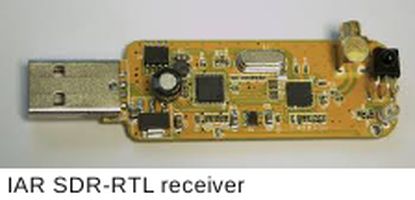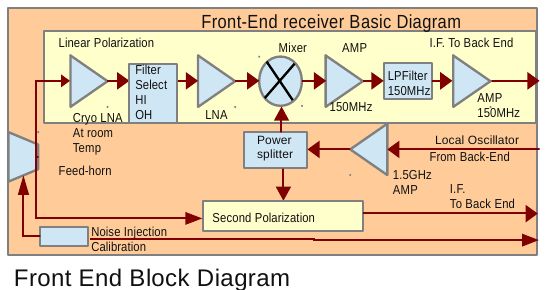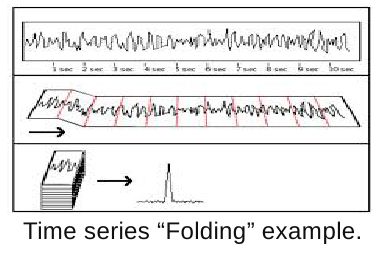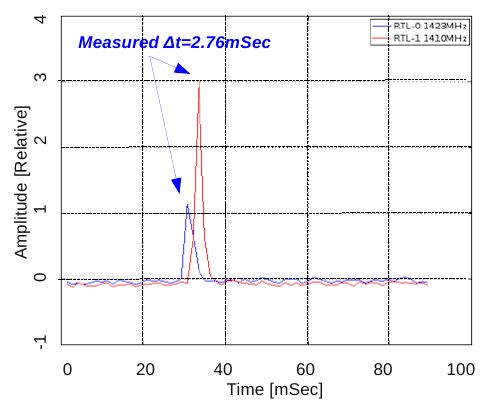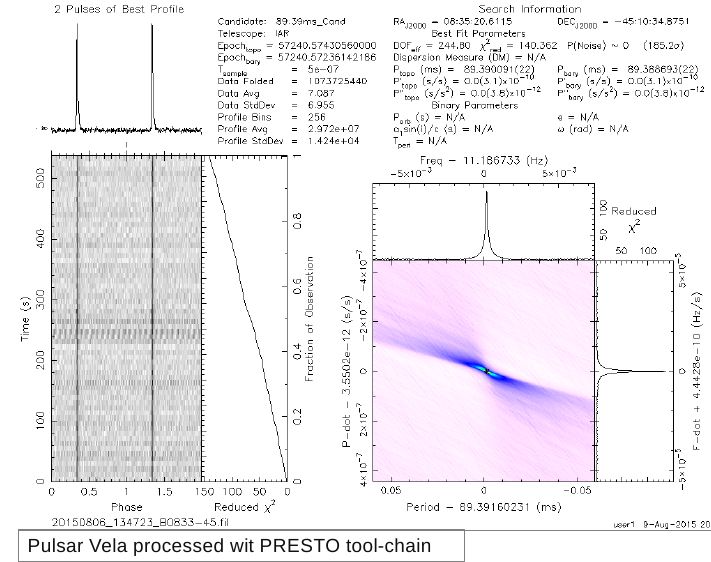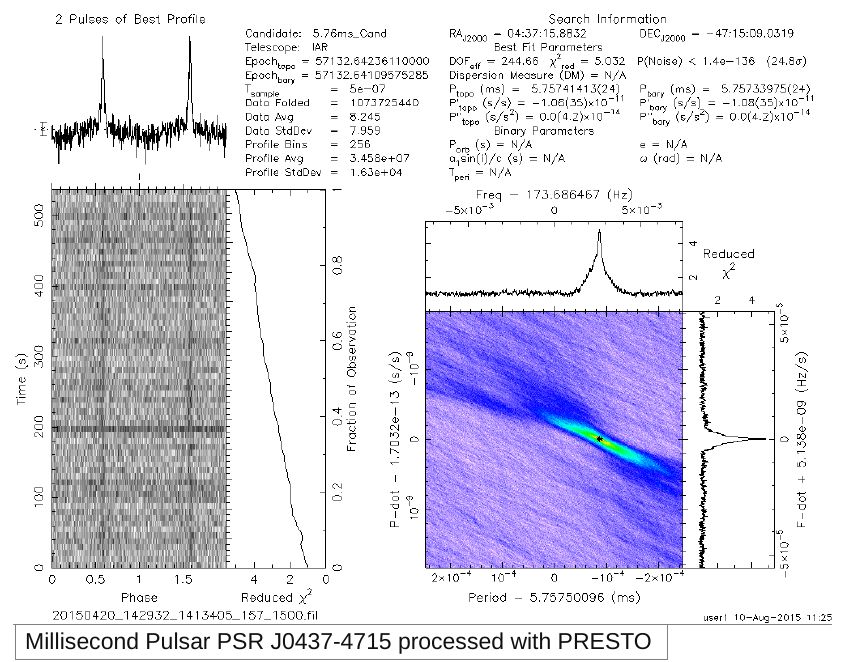
Pulsar Observations using Software Defined Radio
 Introduction
Introduction
During 2014 it was implemented at the IAR a new digital receiver for radio astronomical observations. This digital receiver uses the advantages of the technology called "Software Defined Radio" or SDR. This technology allows the implementation of programs written in different computer languages, who defines the behavior of the electronic receiver, avoiding the development of new hardware when some new functionality is required. In 2015 a new observation program was developed to measure and process radio signals, allowing the measurement and detection of Pulsars.
 Project Description
Project DescriptionIn order to measure Pulsars using the IAR antenna, two digital receivers "SDR-RTL" have been implemented, these receivers allows the acquisition of radio signals at a high speed, allowing processing signals captured by the antenna in near real time. Because of the high speeds of rotation of pulsars, ranging from milliseconds to seconds, it is necessary to maintain proper synchronization of the data acquisition, for this the RTL-SDR used is connected to a local time base. This time base generate several time-frequency signals using as main source a disciplined GPS.
 Software Defined Radio
Software Defined RadioThe SDR systems are radio devices where typically hardware components such as mixers, filters, amplifiers, etc. are implemented or described in software, using a personal computer or other embedded computing devices.
Unlike a conventional electronic receiver an SDR will have a reduced RF input stage followed by a fast digital conversion and all process of data is realized in software.
 Software Description
Software DescriptionThe detection of pulsars was performed using the technique of "folding" in which once known the period or frequency of the Pulsar the acquired data is "folded" and averaged in time series, in order to eliminate noise and leave only the signal of interest.
To use the data generated by digital receivers, a series of programs were used, these programs convert raw data that can be processed with different applications.
To use the data generated by digital receivers, a series of programs were used, these programs convert raw data that can be processed with different applications.
The programs used are:
- "period.py" Python Script, this application provides the interface with TEMPO program which provides the adjusted value of the period of a pulsar for a certain date.
- "rapulsar" Developed in C language, this application process the raw files "folding" the data based on already known pulsar period.
- "rtl_sdr_2fil" Developed in C language, this application converts the raw format files files into ".fil format" to be processed with the PRESTO tool-chain, (PulsaR Exploration and Search Toolkit) developed by Scott Ransom from NRAO.
- "period.py" Python Script, this application provides the interface with TEMPO program which provides the adjusted value of the period of a pulsar for a certain date.
- "rapulsar" Developed in C language, this application process the raw files "folding" the data based on already known pulsar period.
- "rtl_sdr_2fil" Developed in C language, this application converts the raw format files files into ".fil format" to be processed with the PRESTO tool-chain, (PulsaR Exploration and Search Toolkit) developed by Scott Ransom from NRAO.
 Resulting Observations
Resulting ObservationsThe first observed radio source was Vela Pulsar (PSR B0833-45 / PSR J0835-4510 / 2U 0832-45), this pulsar has a rotation speed of around 89 milliseconds, is located at a distance of 936 years and it has an average light intensity 1100mJy.
The second pulsar observed was the Pulsar PSR J0437-4715, it was discovered by the Parkes Observatory in Australia, it is one of the nearest pulsars and strongest observed so far. The Pulsar rotates on its axis about 173.7 times per second, completing one rotation every 5.75 milliseconds and is estimated to be at 509.8 light years away.
A later observation of the Pulsar Vela was realized in order to estimate the Dispersion Measurement originated by the pulse delay passing thought the interstellar medium.
 Acknowledgment
Acknowledgment The author wants to give a special recognition to the work and assistance, to develop the software for the presented work to the following people:
- Peter W. East.
- Steve Olney.
- Wolfgang Herrmann.
- Peter W. East.
- Steve Olney.
- Wolfgang Herrmann.
 Participants
ParticipantsTéc. Guillermo Gancio --> ggancio -at- iar.unlp.edu.ar
Peter W. East, external colaborator (British Astronomical Association, Burlington House, London, United Kingdom)

